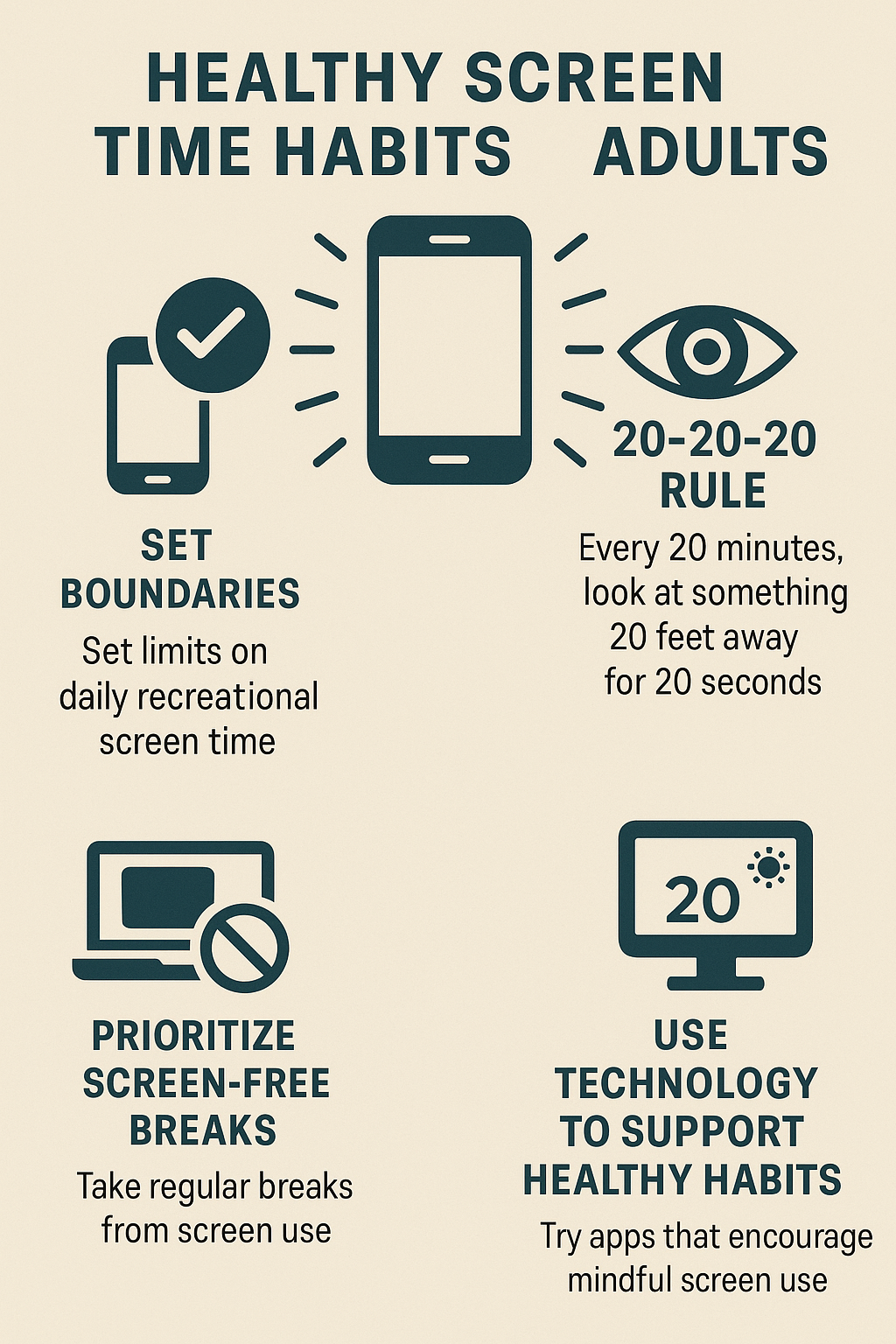We use screens for work, entertainment, communication, and more. While technology offers convenience and connectivity, excessive screen time can lead to issues like eye strain, poor posture, sleep disturbances, and decreased mental well-being. Developing healthy screen time habits is crucial for maintaining overall wellness.
1. Set Boundaries with Intentional Use
Start by evaluating how much of your screen time is intentional versus mindless scrolling. Establish clear goals for screen use:
• Use apps and websites with a purpose.
• Set timers or use screen time tracking tools to stay aware of your habits.
• Designate specific times for social media, news, or games.

2. Follow the 20-20-20 Rule
To reduce eye strain, follow this simple guideline:
• Every 20 minutes, look at something 20 feet away for at least 20 seconds.
This helps relax the eye muscles and prevent eye fatigue.
3. Prioritize Screen-Free Breaks
Frequent breaks are essential, especially if you work at a computer:
• Take a 5-10 minute break every hour.
• Use breaks to stretch, walk, hydrate, or rest your eyes.
4. Establish Tech-Free Zones
Creating spaces in your home that are screen-free encourages better boundaries and deeper connections:
• Keep phones out of the bedroom to improve sleep.
• Avoid screens during meals to foster more mindful eating and social interaction.
• Use an alarm clock instead of your phone to reduce nighttime screen exposure.
5. Adjust Your Screen Environment
Poor screen setups can lead to discomfort and health issues:
• Position screens at eye level to avoid neck strain.
• Use blue light filters or night mode in the evening to reduce sleep disruption.
• Ensure proper lighting in your workspace to avoid glare and squinting.
6. Be Mindful of Content Consumption
What you consume online can impact your mental and emotional health:
• Curate your digital feed to include uplifting and informative content.
• Unfollow accounts that induce stress, comparison, or negativity.
• Learn something new.
7. Incorporate Offline Activities
Balance is key. Make time for hobbies that don’t involve screens:
• Read physical books or magazines.
• Exercise outdoors or engage in creative pursuits like art or cooking.
• Spend time with friends and family in person whenever possible.
8. Use Technology to Support Healthy Habits
Paradoxically, tech itself can help manage your screen time:
• Use apps like Forest, Freedom, or Screen Time to monitor and limit usage.
• Set do-not-disturb schedules on your devices.
• Enable grayscale mode to make your phone less visually engaging during certain hours.
Conclusion
Screens are an integral part of modern life, but mindful use is essential for well-being. By implementing small changes in how you interact with your devices, you can reduce negative impacts and foster a healthier digital lifestyle. Is’s not about eliminating screens—it’s about using them with intention and balance.
